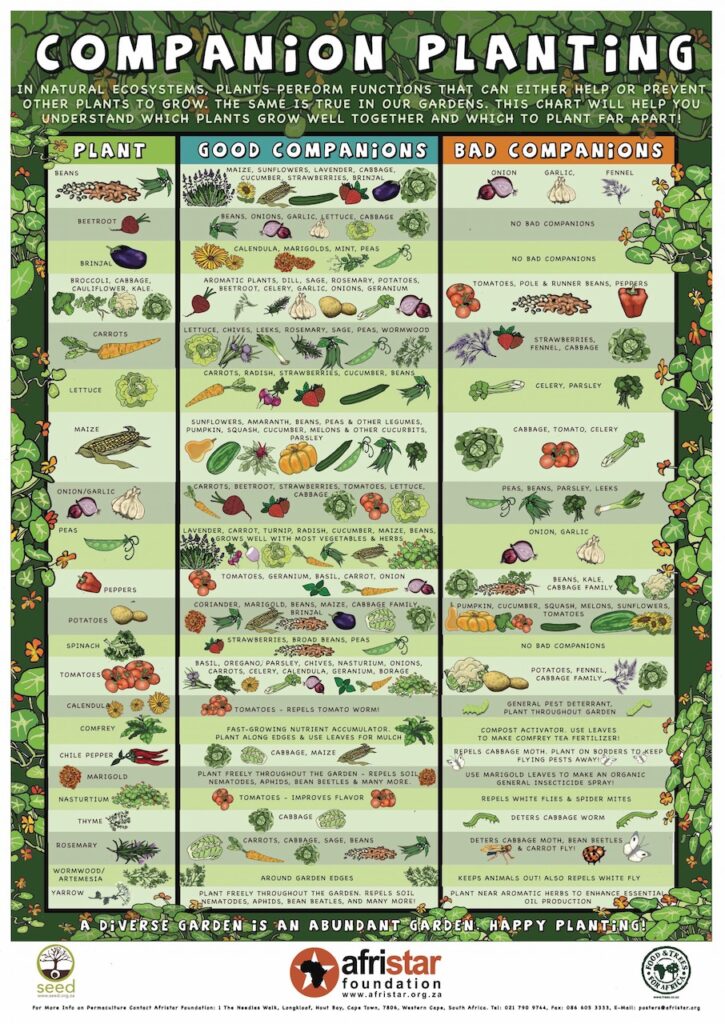Introduction
Planting the right combinations of plants together in a garden can significantly boost growth, improve soil health, and reduce pests naturally. Known as companion planting, this gardening technique leverages the natural relationships between plants to create a thriving ecosystem. Whether you’re a beginner or an experienced gardener, understanding which plants can be planted together will help you maximize your garden’s productivity and sustainability.
This article explores the best plant pairings, explains how companion planting works, and provides practical tips for designing a garden with harmonious plant companions. Dive in to learn how to create a flourishing garden where plants support each other for better growth and yield.
What Is Companion Planting and Why Is It Important?
Companion planting involves growing different plants in proximity for mutual benefit. This practice dates back centuries and is rooted in traditional agriculture, emphasizing biodiversity and natural pest control.
Key Benefits of Companion Planting
- Pest Control: Certain plants repel harmful insects when planted near vulnerable crops.
- Improved Growth: Some plants enhance nutrient uptake or provide shade and support to their companions.
- Soil Health: Legumes fix nitrogen, enriching the soil for neighboring plants.
- Space Optimization: Combining tall and low-growing plants maximizes garden space.
By understanding these benefits, gardeners can use companion planting to reduce chemical inputs, increase yields, and promote healthier plants.
Popular Plant Combinations That Thrive Together
Choosing compatible plants is crucial for successful companion planting. Here are some expert-recommended pairings:
1. Tomatoes, Basil, and Marigolds
- Tomatoes and Basil: Basil improves tomato flavor and repels pests like whiteflies.
- Marigolds: These flowers deter nematodes and other harmful insects.
This trio creates a natural pest barrier while enhancing growth and taste.
2. Carrots and Onions
- Carrots: Benefit from the pest-repelling properties of onions.
- Onions: Help deter carrot flies.
Planting these together reduces pest damage and optimizes underground space.
3. Beans, Corn, and Squash (The Three Sisters)
- Beans: Fix nitrogen in the soil, nourishing corn and squash.
- Corn: Provides natural support for climbing beans.
- Squash: Offers ground cover to suppress weeds and retain moisture.
This traditional Native American planting method exemplifies synergy among plants.
4. Lettuce and Radishes
- Lettuce: Prefers cooler soil, which radishes help by breaking up the ground.
- Radishes: Mature quickly and can be harvested before lettuce needs more space.
This pairing optimizes harvest timing and soil conditions.
How to Plan Your Garden Using Companion Planting Principles
Assess Your Garden Conditions
Before selecting plants, evaluate soil type, sunlight, and climate to ensure compatibility.
Map Out Plant Locations
Use garden planning tools or sketches to position plants based on their companion relationships. Consider plant height, root depth, and nutrient needs.
Rotate Crops Annually
Crop rotation prevents soil depletion and reduces disease buildup, enhancing long-term garden health.
Use Natural Pest Deterrents
Incorporate herbs like rosemary, thyme, and sage to attract beneficial insects and repel pests.
Expert Tips for Maximizing Companion Planting Success
- Start Small: Experiment with a few companion pairs to observe interactions.
- Observe and Adapt: Monitor plant health and adjust combinations as needed.
- Maintain Soil Health: Add organic mulch and compost to support diverse plantings.
- Water Wisely: Group plants with similar water requirements to conserve resources.
Conclusion
Planting compatible plants together unlocks a garden’s full potential by enhancing growth, reducing pests, and improving soil fertility naturally. Companion planting is a time-tested method blending science and tradition to create sustainable, productive gardens.
By carefully selecting plant combinations like tomatoes with basil and marigolds or the Three Sisters (beans, corn, and squash), you foster a garden ecosystem where plants support each other. Start applying these principles in your garden today to enjoy healthier plants, richer harvests, and a more vibrant outdoor space. Remember, successful gardening is about observing your plants, learning from nature, and adapting your strategies accordingly.
